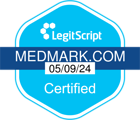Learn how to reduce the stigma around addiction treatment and why medications like methadone and buprenorphine are vital to long-term opioid recovery.
Negative stereotypes surrounding addiction, drug misuse and mental health are widespread in today’s society. This stigma around addiction treatment has serious consequences, especially for individuals who hesitate to seek help due to fear of being judged or labeled. Some may even experience discrimination due to substance use disorder, which is a chronic illness.
Medication-assisted treatment (MAT) using methadone and buprenorphine for opioid use disorder (OUD) is highly effective. These drugs are part of evidence-based treatment that significantly decreases overdose deaths. However, harmful recovery stigma causes many to see MAT as simply “replacing one drug with another,” discouraging people from accessing life-saving care.
Reducing the stigma around methadone and buprenorphine requires significant changes. It is crucial to expand MAT education, reframe addiction as a medical illness and train healthcare providers about these medications. Continue reading to learn more about stigma in recovery and how recovery programs help so many people find long-term success.
Methadone Stigma: Addressing Common Misconceptions
Methadone stigma remains a major issue for many in addiction recovery. People on methadone often deal with misconceptions and prejudice from loved ones, healthcare providers, the public and others in recovery.
Because methadone is a long-acting opioid, some mistakenly believe it is just another substance of misuse. Others may view taking methadone as a sign of weakness or “not truly being in recovery.” These false assumptions increase shame, delay treatment, and contribute to isolation.
Ways to reduce methadone stigma include:
- Framing opioid use disorder as a medical condition that deserves evidence-based treatment, like any other chronic illness.
- Educating patients, families, and providers about how methadone works to stabilize brain chemistry and reduce cravings. With a deeper understanding of how opioid addiction affects the brain, methadone will become an accepted form of medicinal therapy.
- Supporting policy changes such as expanded access to take-home doses, telehealth services, and pharmacy dispensing. These measures normalize methadone as part of mainstream healthcare.
Normalizing methadone treatment benefits patients by enhancing access to this effective, life-saving medication through the reduction of barriers and social stigma. A flexible and integrated approach to methadone management enables patients to achieve long-term recovery and improve their quality of life.
Buprenorphine Misconceptions and Harmful Stigma
Similar to methadone, misconceptions about buprenorphine include views that it is merely another drug to replace an addiction. People often view it as a sign of weak will, deeming the medication as unsuitable for long-term recovery.
Additionally, buprenorphine stigma views addiction as a moral failing. Those people consider buprenorphine treatments as an ineffective ‘substitute’ rather than a valid medical option for a chronic brain disease. These false beliefs and prejudices hinder access to effective treatment. This results in underuse of the medication and ongoing suffering for those with opioid use disorder.
Common misconceptions about buprenorphine include:
- Buprenorphine is a substitute for illicit drugs. Buprenorphine is a long-acting medication with a ceiling effect, which means it does not produce a high. It is not an illegal drug. It works by stabilizing opioid receptors to reduce withdrawal symptoms and cravings. This helps patients focus on making lifestyle changes and behavioral improvements.
- Taking buprenorphine is for the weak-willed. Addiction is a medical condition that needs professional treatment. People with opioid use disorder find it hard to quit because of brain changes caused by the drugs. Buprenorphine is an effective medical treatment, similar to treatments for chronic illnesses like diabetes or hypertension.
- Detox is better. Detox does not help people stop using drugs. It does not address the brain changes and other aspects of addiction. Buprenorphine should continue as long as it benefits the patient, much like insulin for diabetes management. Rapid tapering can raise the risk of overdose.
Stigma around addiction treatment with buprenorphine harms more than just patients, it affects providers, pharmacists, and entire communities. It discourages prescribing, limits access, and worsens the opioid crisis. Addressing these misconceptions can save lives.
Education on Methadone and Buprenorphine Benefits
Providing education about methadone and buprenorphine treatment offers essential advantages for patients, healthcare providers and society. It helps to expand treatment access, enhance safety and lower addiction-related stigma as well as myths about addiction. As the availability of medication-assisted treatment increases, community education is crucial to achieving better results in managing opioid use disorder.
The focus of methadone and buprenorphine education should include:
- Effectiveness: Teaching how these medications restore brain chemistry, decrease cravings and prevent withdrawal symptoms.
- Overdose prevention: Highlighting that MAT lowers the risk of overdose and overall mortality.
- Side effects: Informing people about common side effects like constipation and dry mouth. Also, pointing out the risks of combining MAT with other substances.
- Safety: Clarifying that both medications are safe and effective when taken as prescribed. Highlighting that the risk of overdose increases if treatment stops abruptly, too.
- Dispelling myths: Directly countering common misconceptions, such as the idea that MAT simply replaces one addiction with another.
- Treatment access: Highlighting the differences in medication access is key. A medical provider prescribes buprenorphine to take at home, whereas patients take methadone at a licensed clinic.
- Long-term use: Note that MAT can be a long-term treatment, lasting months to a lifetime. Patients should not discontinue the medication without consulting a doctor.
Methadone and buprenorphine are effective treatments for opioid use disorder. They both help decrease cravings, prevent withdrawal symptoms and reduce overdose risk. Both are integral to medication-assisted treatment, which also involves counseling and behavioral therapies. The optimal medication choice varies based on a patient’s specific needs, level of dependence and personal situation.
Methadone and Buprenorphine Treatment with MedMark
If you struggle with opioid addiction and are uncertain about where to go, MedMark can help. Opioid use disorder is a complex disease and presents a significant risk of overdose. At MedMark, we provide comprehensive medication-assisted treatment programs designed to assist people addicted to opioids.
With the help of methadone and buprenorphine, many MedMark patients have found long-lasting recovery from opioid use disorder. Please contact us today to learn more about how our team can help you find a fulfilling life in recovery.





